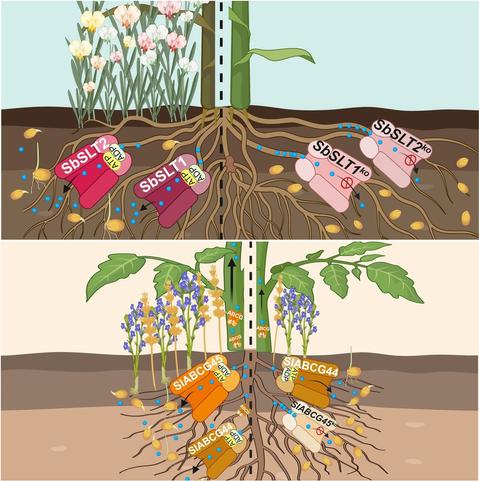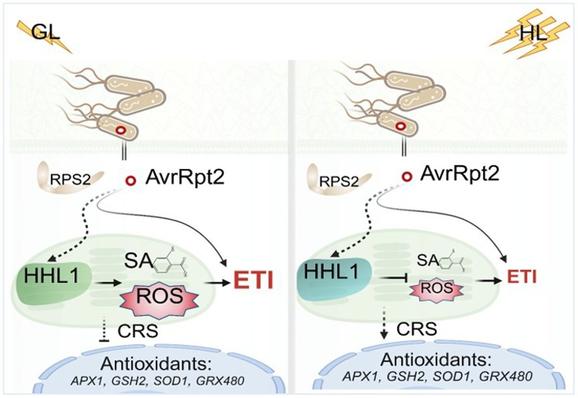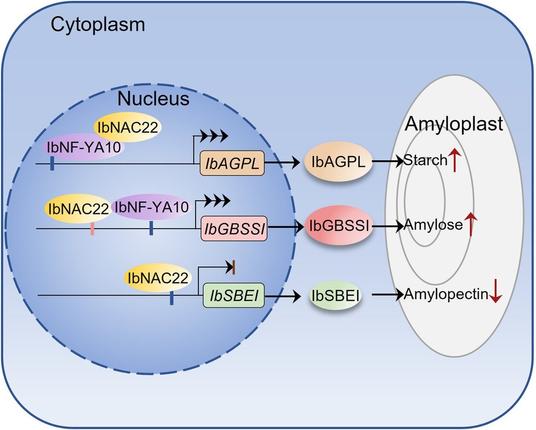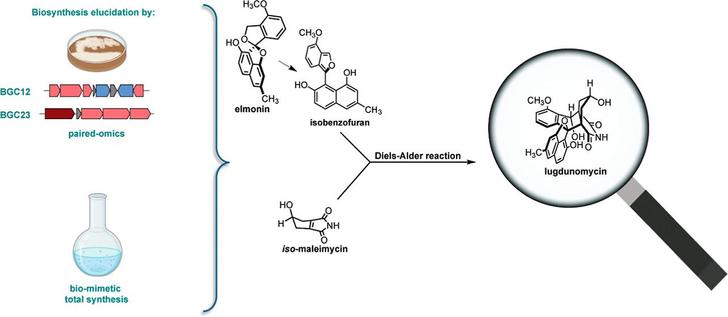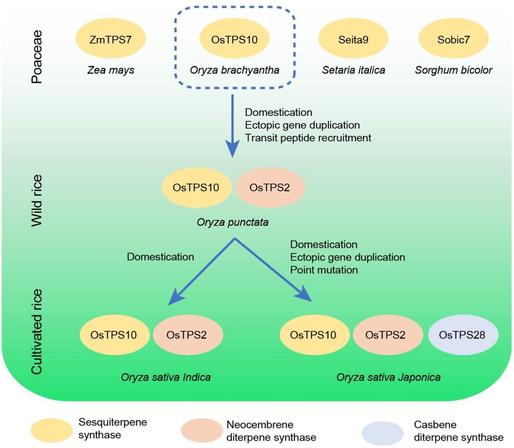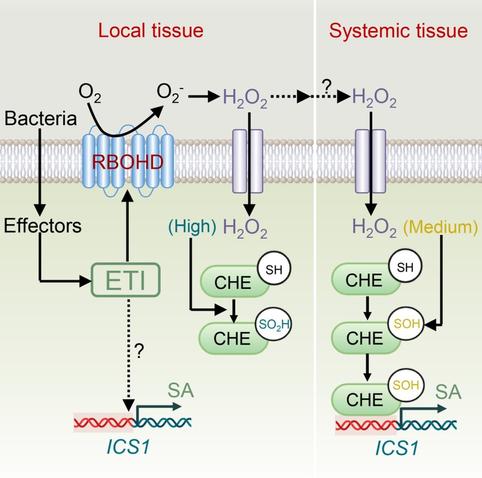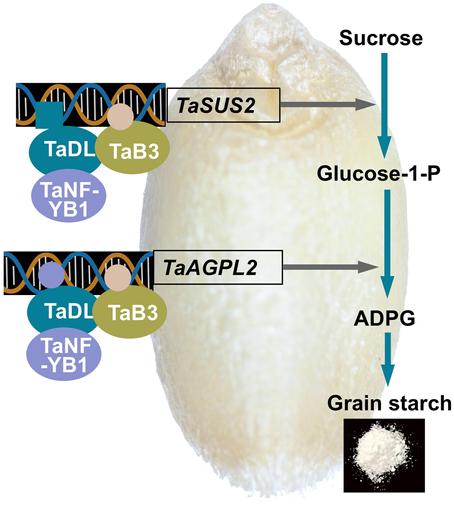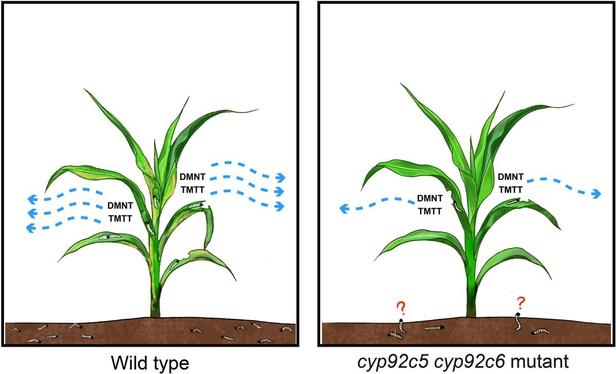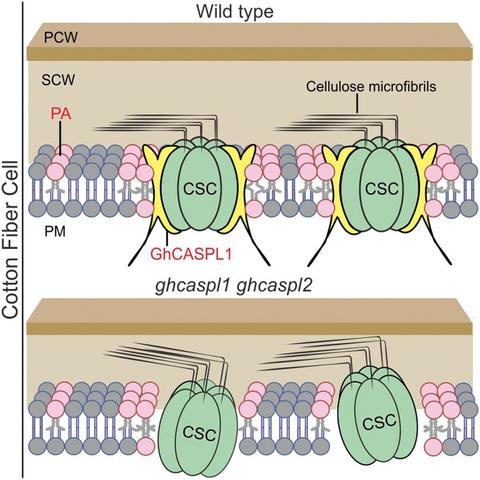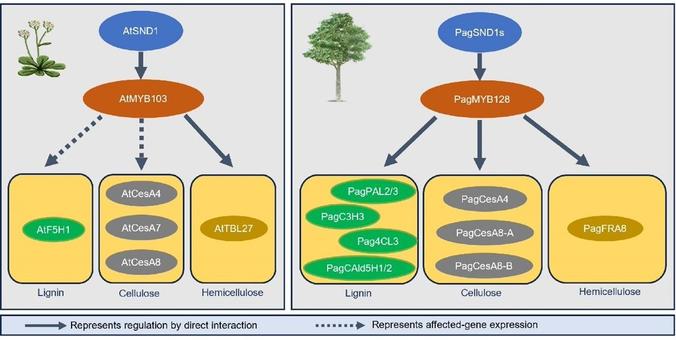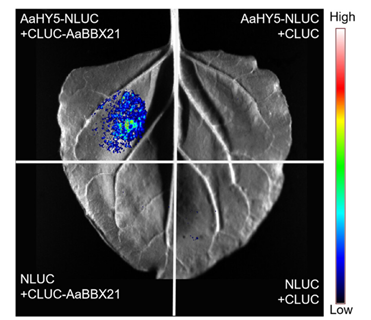Recent studies explore a novel approach to control parasitic #plants by manipulation rather than #biosynthesis of #strigolactone exudation.
Learn more about this potential #CropScience breakthrough in a new #JIPB commentary.🔓⬇️
https://doi.org/10.1111/jipb.13937
@wileyplantsci
#PlantSci #botany
#biosynthesis
Most #biosynthetic gene clusters remain uncharacterized. @marnixmedema @gillesvanwezel &co integrate #GRN analysis & global expression data to identify desJGH as an operon essential for #biosynthesis of #desferrioxamineB in Streptomyces @PLOSBiology https://plos.io/43UVUPB
Cai et al. shine a light on #chloroplast-produced ROS #biosynthesis in #plant #immunity, with new findings that HHL1 modulates AvrRpt2-triggered immunity by regulating ROS homeostasis in a light intensity-dependent manner.
https://doi.org/10.1111/jipb.13929
@wileyplantsci
#PlantSci #JIPB #botany
3-Jun-2025
Two plant species invent the same chemically complex and medically interesting substance
The elucidation of the biosynthetic pathway of #ipecacuanha #alkaloids shows how two distantly related plant species could develop the same substance independently
https://www.eurekalert.org/news-releases/1085960 #science #plants #bioactives #biosynthesis #evolution #plantPhysiology
Serious question...can #SweetPotato get any better?
Fan et al. think so! They recently identified a natural allelic variant in the promoter of IbNAC22 that regulates #starch #biosynthesis and is a candidate #gene for crop improvement!
https://doi.org/10.1111/jipb.13916
@wileyplantsci
#PlantSci #JIPB #botany
Biosynthesis of ascorbic acid in animals and plants
Only humans cannot synthesize ascorbic acid, but plants and animals are very good at this task. In plants, biosynthesis begins with D-glucose, D-fructose is obtained, after D-mannose, from which, through other processes, ascorbic acid is obtained.
In animals, this process occurs differently, everything starts with D-glucose and ends with ascorbic acid.
New publication: Biomimetic Total Synthesis and Paired Omics Identify an Intermolecular Diels-Alder Reaction as the Key Step in Lugdunomycin Biosynthesis. #bacteria #biosynthesis #chemicalreactions #genetics
https://doi.org/10.1021/jacs.5c01883
Mapping the #yerba_mate #genome reveals surprising facts about the #evolution of #caffeine.
#Ilex #genome_duplication #biosynthesis
https://phys.org/news/2025-02-yerba-genome-reveals-facts-evolution.html
Understanding the complex mechanisms behind #seed oil #biosynthesis regulation provides insights and strategies for improving oil production and stress tolerance in #oil #crops.
Wei et al. explore what we know in a new #JIPB review!
https://doi.org/10.1111/jipb.13834
@wileyplantsci
#PlantSci #botany
Derivatives of #casbene and #neocembrene play significant roles in #plant defense and have #pharmaceutical applications. Understanding the #metabolic pathways and #evolutionary history governing the #biosynthesis of these compounds offers resources for #crop breeding.
https://doi.org/10.1111/jipb.13836
@wileyplantsci
#PlantSci #botany
Ravi Gupta discusses the recent identification of #HydrogenPeroxide as a systemic acquired #resistance-inducing signal and its dose-dependent effect on systemic tissue SA #biosynthesis in response to #pathogen attack.
https://doi.org/10.1111/jipb.13833
@wileyplantsci
#PlantSci #JIPB #botany
#Microbial #cell factories may help get to the root of understudied #plant #molecules
#metabolomics #biosynthesis #strigolactones
https://phys.org/news/2025-01-microbial-cell-factories-root-understudied.html
I am thrilled to announce that our lab has joined @Uni_Stuttgart and I have accepted the position as Professor of Technical Biochemistry! 🔬🥂 I am honored to follow in the footsteps of Prof. Bernhard Hauer, whose contributions to the field are truly inspiring.
We look forward to continue working on #EnzymeDesign, #Biocatalysis, #Biosynthesis and #NonribosomalPeptides. Thanks to Dr Kirti Sharma, Maximilian Müll, and Kexin Zhang for joining me on the journey from @LeibnizHKI to Stuttgart.
⏳New year, new #PlantScience!🥳
#Starch #biosynthesis is critical for🍞#wheat quality and yield. Here, Liu et al. reveal the crucial role of TaDL and identify the elite allele TaDL-BI associated with starch content. 👇🔓https://doi.org/10.1111/jipb.13815
@wileyplantsci
#JIPB #CropSci #PlantScience #botany #OpenAccess
🌽#Maize #plants produce #terpene compounds when attacked by Asian corn borer larvae, but when #genes involved in #biosynthesis of these plant volatiles are knocked out, plants are made less attractive to herbivory.🔓⬇️
https://doi.org/10.1111/jipb.13763
@wileyplantsci
#JIPB #PlantSci #openaccess #botany
Cytokinin Oxidase/Dehydrogenase as an Important Target for Increasing Plant Productivity - #cytokinins #biosynthesis #degradation #cytokininoxidase #dehydrogenase #CKO #CKX #CKXgenes #activityregulation #abioticstresses #resistance #productivity - https://link.springer.com/article/10.3103/S0095452724020051
In a new study published by #JIPB, Zhang et al. shed light on CASPL functions and the #molecular machinery behind secondary #cell wall #biosynthesis in #cotton fibers. Free to read right here!👇
https://doi.org/10.1111/jipb.13777
@wileyplantsci
#PlantSci #botany
Find out which #cytochrome P450 is responsible for the de novo #biosynthesis of two types of aporphine #alkaloid in #yeast!
Li et al. lay a foundation for using #SynBio to produce these valuable compounds.
https://doi.org/10.1111/jipb.13724
@wileyplantsci
#JIPB #PlantSci #pharmacology #botany #syntheticbiology
#Biosynthesis of #cellulose, #lignin, and #hemicelluloses in #plants is regulated by a transcriptional regulatory network featuring orthologous shared TFs of #poplar and #Arabidopsis.
#Wood you like to know more?😉https://doi.org/10.1111/jipb.13717
@wileyplantsci
#PlantSci #JIPB #forest #botany
#Artemisinin is an important anti-#malarial #drug compound produced by the glandular #trichomes of sweet #wormwood.
He et al. report that the AaBBX21–AaHY5 module mediates its #light-regulated #biosynthesis in A. annua
https://doi.org/10.1111/jipb.13708
@wileyplantsci
#JIPB #PlantSci #botany
